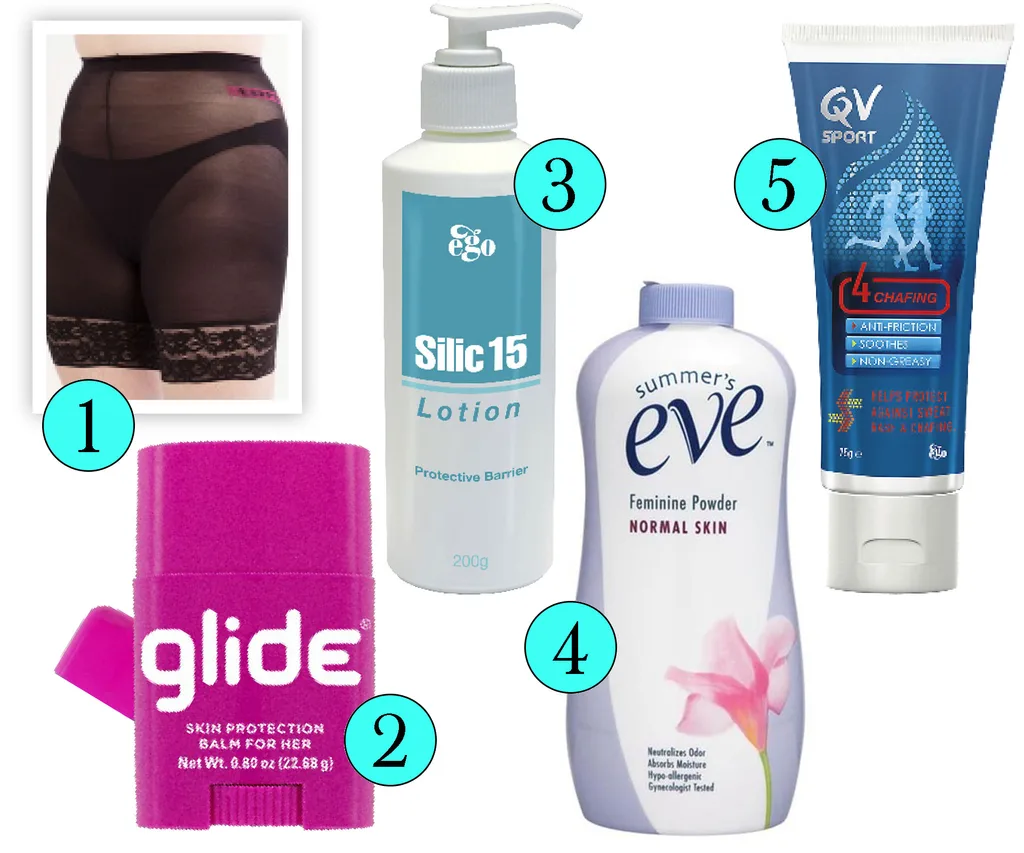There’s a misconception that chafing only happens to those carrying a few extra kilos but in fact, it can happen to any one of us, especially during the hottest months when skin is repeatedly rubbing on skin.
“It’s simply not true that chafing only affects overweight people – even people who exercise regularly can develop this problem,” says Dr Magdalena Simonis from the Royal Australian College of General Practitioners.
Regardless of the reason chafing occurs, the solution is usually the same. “It’s about identifying the cause of the friction and preventing secondary problems – such as a bacterial or fungal infection – that may result,” Dr Simonis says.
Why does chafing happen?
Chafing occurs as a result of too much rubbing due to walking or exercising, or any time repetitive friction wears down the outer-most protective layer of skin.
“While it can occur anywhere on the body, the most common areas are the thighs, groin, armpits and under breasts,” Dr Simonis says. “It typically occurs in areas where there’s skin-to-skin contact, moisture and folds of excess skin, so if you’ve got a round tummy or if it hangs over, your risk may be higher.”
Symptoms may include a burning sensation, stinging and itching, as well as skin that turns pink or red and possibly flaky.
When do I need to see a doctor about chafing?
“Chafing can happen on dry or wet skin, but the latter seems to make it worse, especially in the warmer months when we sweat more,” Dr Simonis says. “When combined, heat and moisture from perspiration can give rise to secondary problems, such as low-grade fungal and bacterial infections. Once you develop a fungal infection, it can very quickly become a chronic condition unless treated.”
If you’re experiencing prolonged discomfort from chafing, see your doctor. “It’s important to pinpoint the exact cause of the pain, because simple chafing is one thing but if there’s a bacterial-fungal element to it, you may require a specific medication to treat it,” she adds. “Most bacterial infections will have a very distinct odour, whereas fungal infections don’t necessarily have a smell. That said, if you have a bacterial infection, you’ll almost invariably have a fungal infection as well.”
Severe pain is another indication it’s time to see your GP. “If the area is very painful, swollen, bleeding or has an offensive odour, you could have an infection that requires a medication, such as an antibiotic, anti-fungal or steroid ointment,” she explains.

Chafing is caused by friction when skin rubs against itself or clothing.
What are the treatment options for chafing?
If you’re already feeling the telltale burn, remember that chafed skin should be treated as soon as possible.
“Gently clean the area with lukewarm water or, if you like using soap, choose a mild hypoallergenic variety – just avoid anything heavily perfumed,” Dr Simonis says. “Follow up by lightly patting the area dry with a towel or using a hairdryer on a cool setting and applying some kind of drying powder afterwards.”
You can also try keeping the area lubricated with an over-the-counter cream to ease the pain of existing chafing. “Pawpaw ointment and vitamin E can be very soothing when applied to inflamed skin, as can hypoallergenic moisturisers designed for chronic dermatitis and eczema.”
How to prevent chafing
Wet chafing can be avoided by keeping the area moisture-free. “Using a hairdryer is an effective way to ensure that your skin is properly dried after bathing. Likewise, moisture-absorbing products, such as powders, are useful in places that experience frequent chafing,” Dr Simonis says.
Hair stubble can be another cause of chafing. “If you shave your armpits, legs or groin area, avoid flare-ups by using a very light moisturiser, oil or balm afterwards to help calm your skin, but avoid areas with skin folds – they’ll benefit from a powder,” she explains.
Finally, moisture-wicking fabrics allow air to circulate around your body, so try wearing them.
Is talc safe?
While some studies suggest using talcum powder may increase the risk of developing ovarian cancer, others have found no such link. Cancer Council Australia notes there is inconclusive evidence that using talcum powder can cause cancer, but if you’re still concerned, use a powder made from cornstarch, which is just as absorbent as talc.
5 calming products to soothe chafed skin

1. Tortz Anti-Chafing Shorts, $22.50
2. Body Glide Skin Protection Balm for Her, $19.99
3. Ego Silic 15 Lotion, $12.95
4. Summer’s Eve Feminine Powder for Sensitive Skin, $6.99
5. QV Sport Chafing Cream, $9.99


